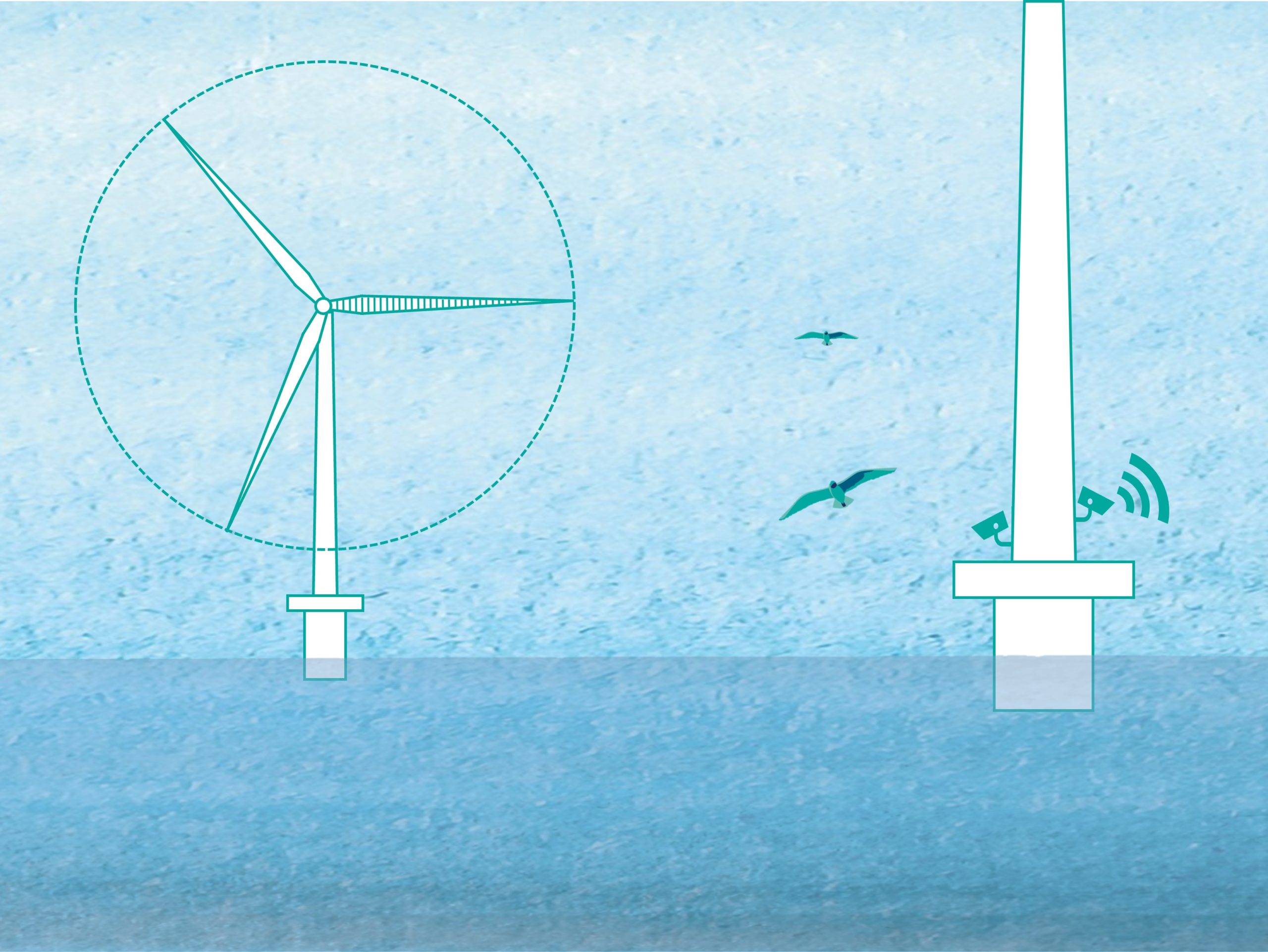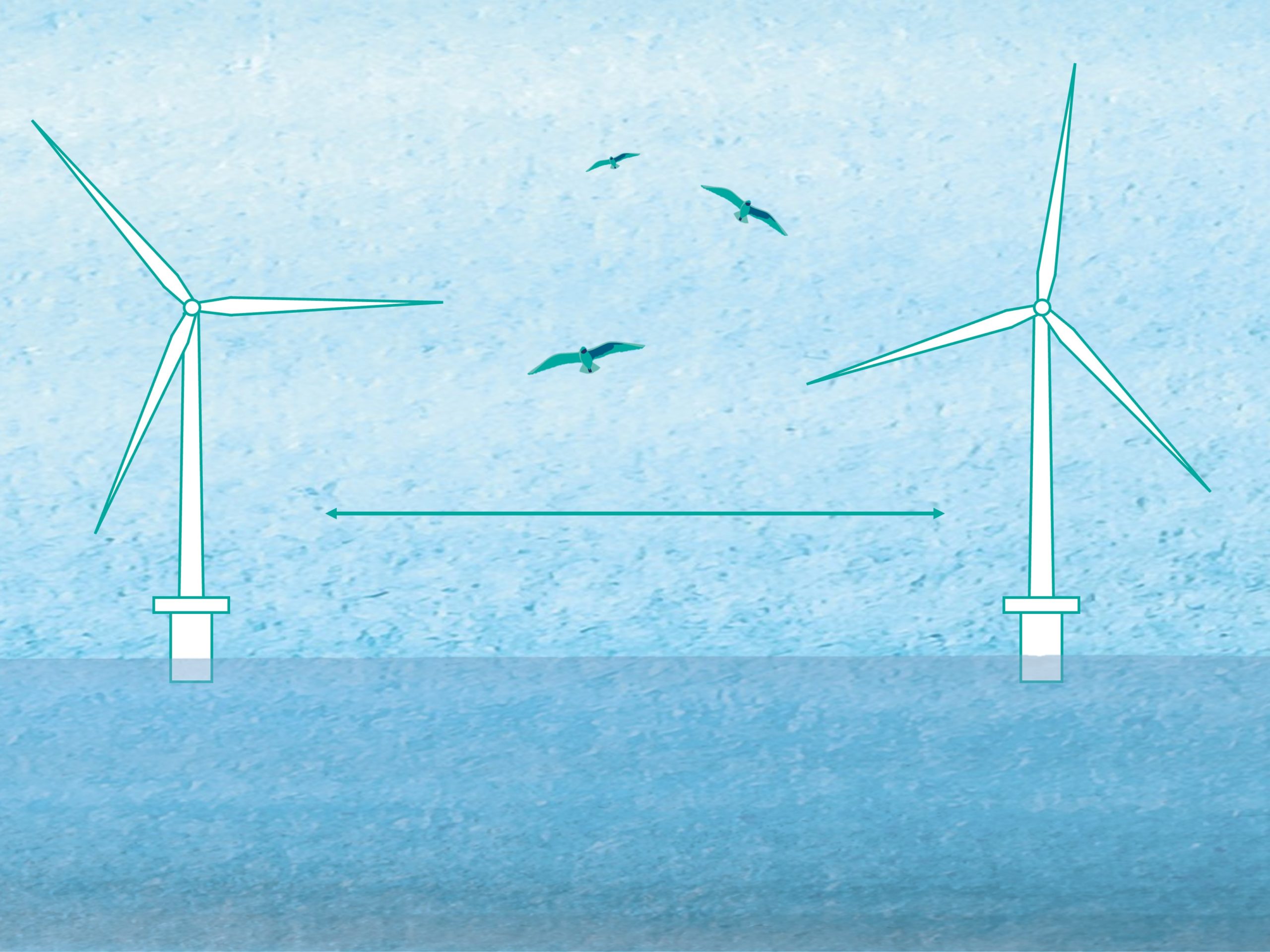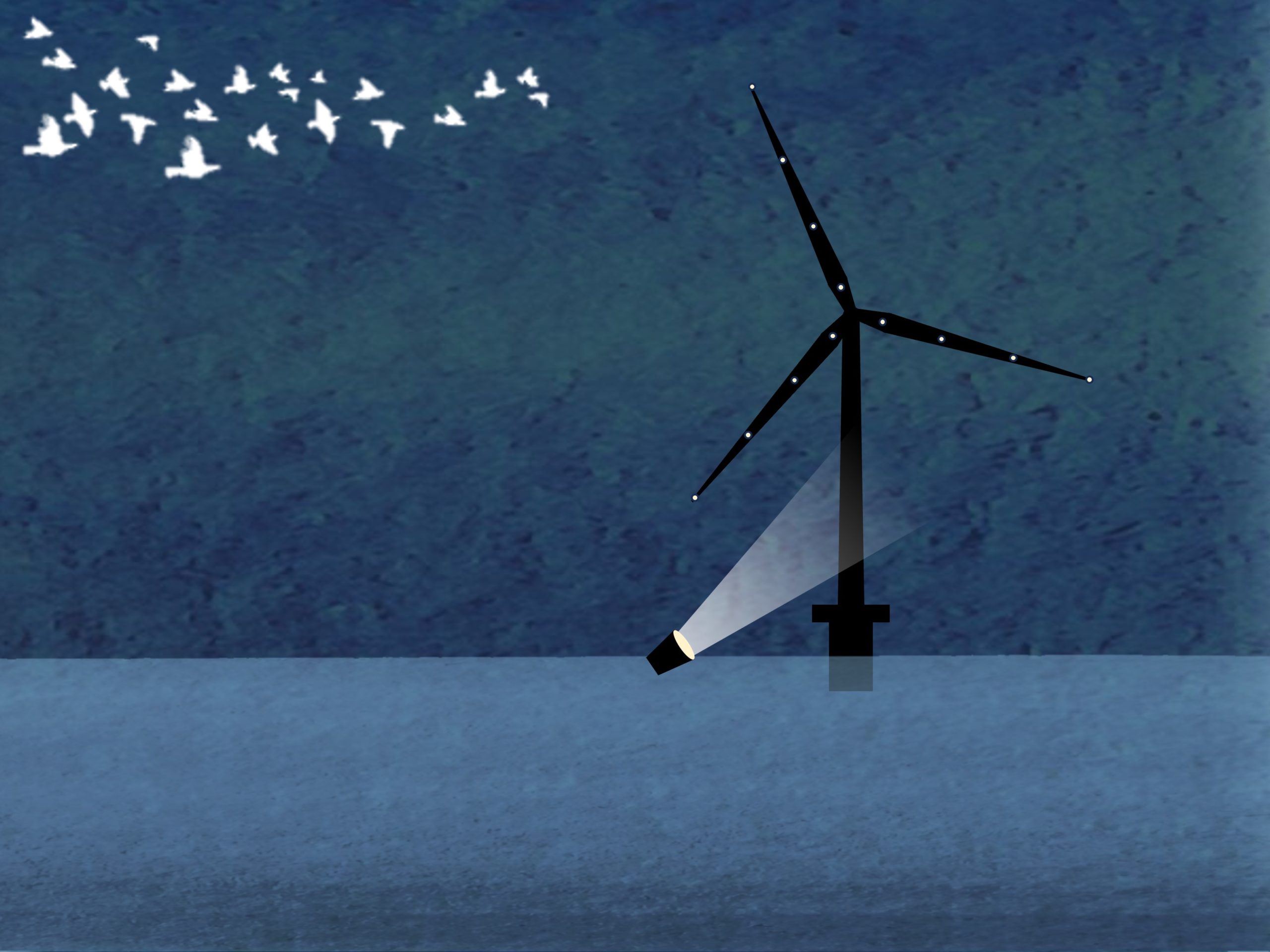For birds

The North Sea is part of the habitat of various bird species. Every day, birds are resting in the North Sea’s waters or crossing the area en route to their next destination.
We realise that our wind farm can have several negative effects for birds, especially with the neighbouring Brown Bank – a protected Nature-2000-area. We are committed to minimising these negative effects as much as possible.
An important negative direct effect of offshore wind is the chance of collisions with the blades of the wind turbines – which could be fatal. Additionally, birds could start avoiding the area because of the wind farm. This reduces the size of their habitat, though we are unsure whether this is a permanent effect or whether some birds will return over time. The wind farm may also restrict their freedom of movement. After all, they can no longer fly everywhere, hence it could cost them more energy to reach certain areas like the Brown Bank.
There are also several indirect effects, for example related to the lights during construction or the mandatory lights for aviation (obstacle lighting). There are some bird species that use natural light for orientation, and these (artificial) lights could cause confusion and disorientation.
To limit these negative effects to the best of our ability, we have chosen for certain adaptations in the design of the wind farm to reduce the change of collisions and habitat disruption as much as we can.
Partners birds innovations

turbinesTaller wind
turbines







innovations







